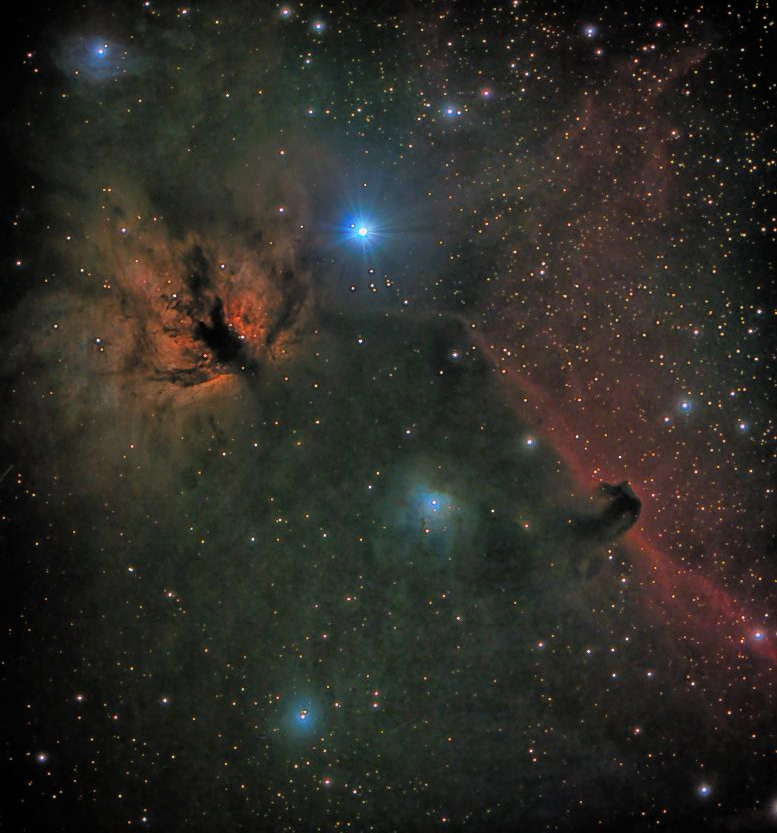Here’s a fresh view showing both the Horsehead Nebula and the Flame Nebula, two celestial showpieces that are located quite close to each other in the constellation Orion. This past week we had a night with exceptionally clear and transparent skies. I was able to image a couple of new objects as well as take a fresh look at some old favorites. Among my old favorites, I can’t resist reshowing the Horsehead and the Flame.
Flame Nebula and Horsehead Nebula (35 min total exposure Jan 27, 2022)

The Flame Nebula and the Horsehead Nebula are part of the Orion Molecular Cloud Complex, a large star-forming region. They are separated from each other by about half a degree – approximately the diameter of the full moon. The famous Orion Nebula is also a part of this complex.
The darkness of the Horsehead (B 33) is caused mostly by thick dust blocking the light of stars behind it. It stands out in stark contrast to the bright reddish emission nebula IC 434 behind it. Other nearby objects include NGC 2023, IC 435 and IC 432, all of which are reflection nebulae. (Reflection nebulae are clouds of interstellar dust that reflect the light from nearby or internal sources, like fog around a car headlight.) The very bright star Zeta Orionis (the left-most star in Orion’s belt) is a foreground star, not associated with the Orion Molecular Cloud components.
Click here to see my original post of the Horsehead, and click here to see my original post of the Flame. Today’s image is a longer exposure that covers a larger area of the sky and shows vividly how the two are really part of the much larger complex. Plus, the sky conditions were better this week and I’ve learned a little more about taking and processing images in the meantime.